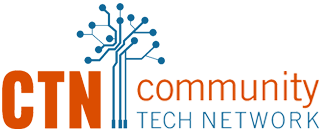Myth: The digital divide will solve itself over time.
The digital divide is the gap between those who have the access and skills to use technology and those who do not.
Some folks believe that the digital divide will disappear over time. After all, most young people in today’s society are growing up with technology, and there are 8-year-olds who are more tech-savvy than their parents!
Thus, there is a commonly held belief that these younger generations will inherently possess the necessary skills to survive in our digital age. As they become the majority in the population, and older generations, who are less comfortable with technology, eventually phase out, the digital divide will be eliminated.
Makes sense, right?
However, these assumptions overlook the persistent challenges and complexities surrounding equitable access, affordability, digital literacy, and the need for proactive interventions. In this blog post, we aim to debunk the myth that the digital divide is solving itself and shed light on the ongoing disparities that demand focused efforts.
Technological advancements have undoubtedly transformed our society, but they have not eliminated the digital divide. While access to technology has increased, it does not guarantee equitable access or digital literacy for all individuals.
Affordability remains a huge issue, especially for families with limited incomes. The cost of devices and internet bills can render connectivity impossible for many individuals. Geography also plays a role, as there is limited broadband infrastructure and poor service in many rural communities and redlined urban areas. Although many young folks are indeed digitally connected, more than 1 in 10 school-age children are not.
Additionally, digital literacy is key to bridging the digital divide. Young students that live in marginalized communities will not have access to the same level of digital skills education as their peers from wealthier school districts. Non-white, low-income, disabled, and non-English-speaking children are some of the most likely to be affected.
In summary, the internet has definitely become more ubiquitous in today’s society than ever before. However, the notion that the digital divide is solving itself is a fallacy that ignores the pressing need for proactive interventions. Bridging the digital divide requires deliberate efforts from various stakeholders, including policymakers, community organizations, and technology providers. It demands targeted initiatives to improve internet infrastructure, expand affordable access, and provide digital literacy training programs for underserved populations.
By recognizing the challenges that persist and taking collective action, we can work toward a more inclusive and equitable digital society, where everyone has equal opportunities to thrive in the digital age.
Note: This post is part of a series of digital mythbusting articles. Check out part one.


Comments are closed.